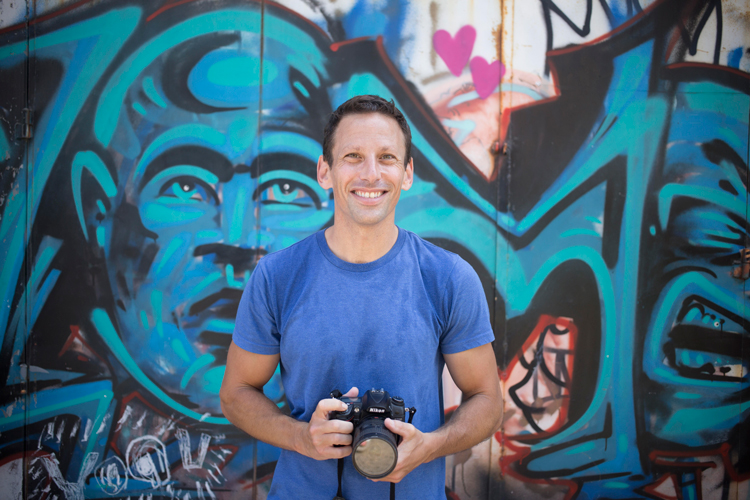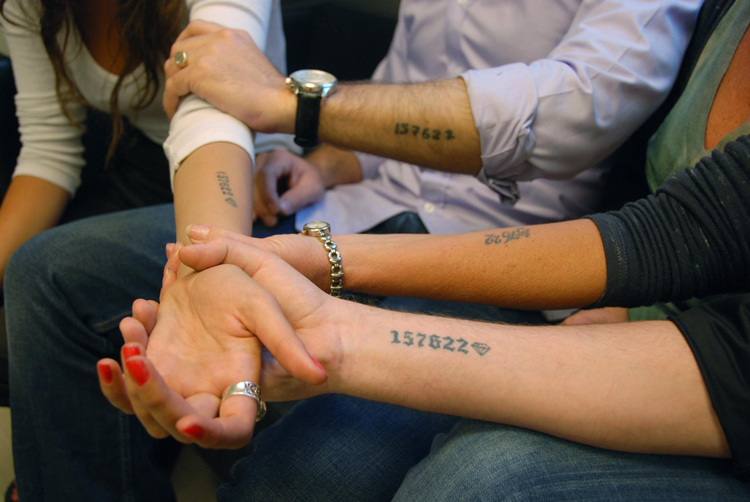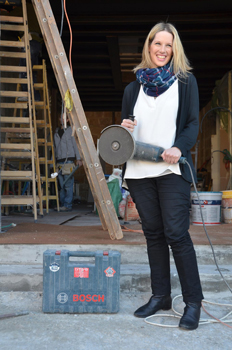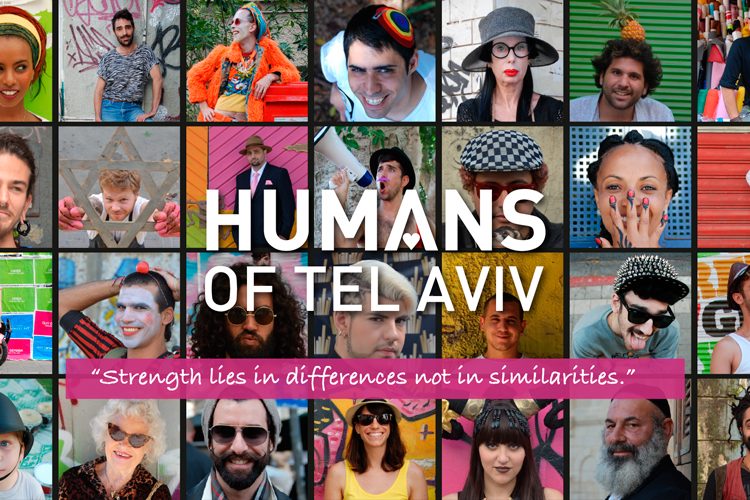Humans of Tel Aviv is a photo blog (http://www.humansoftelaviv.co.il/) that features portraits of ordinary individuals of Tel Aviv and their not-so-ordinary stories.
Creator Erez Kaganovitz started the Humans of Tel Aviv project in 2012 in order to show the world the true face of Tel Aviv—not a war-torn city but a complicated society of multiculturalism, vibrancy and diversity. Through images, Kaganovits aims to change the traditional narrative and give people a voice to tell their own stories.
Through monthly reach of 500,000 audience around the world, Humans of Tel Aviv gives daily glimpse into the lives of the people in Israel and delivers “all the ingredients of the melting pot that is Tel Aviv.”
In an exclusive interview, Erez Kaganovitz tells us all about Humans of Tel Aviv.

Erez Kaganovitz
How did you come up with the idea of creating Humans of Tel Aviv and why? 2’20
There are so many misconceptions about Israel and it’s really upsetting. I’ve been traveling all over the world and whenever I travel to places, the first question people are going to ask is “where are you from.” And when I tell them I come from Israel, you can see how their facial expression start to change. “Is that places where people get exploded all the tine?”
I always thought about what I can do. I wanted to take those people to Israel with me so they can see with their own eyes the multiculturalism, the vibrancy and the diversity of the society. Maybe this would change their perception of Israel.
In 2012, I stumbled upon Humans of New York and it’s a photo site that shows the true colors of New York. I realized this is exactly what I needed to do—showing the true colors of Israeli society, what’s actually going on—through photos. I promised myself that I’m not going to whitewash the situation, but to show the reality, the way it is and let the readers connect the dots themselves.
How do you find stories on a daily basis? And how do you approach your potential subjects?
I’ve been doing this for five years and interviewed over 1000 people but I still get butterflies when I approach people.
When I’m looking for a story, I always try to search for some kind of a vibe. Tel Aviv is such a fashionable place; people always try to make a statement through their outfit. So if I notice a cool earring, a special jewelry, I would start a conversation complimenting their outfit and ask why they are wearing them. I think main thing is that you have to be genuine with them, you have to respect them.
Do you think Humans of Tel Aviv has made a difference in people’s perception of Tel Aviv?
I have received many responses from people around the world about my project. People told me it was their first time seeing Tel Aviv from a different angle and it’s refreshing seeing day-to-day lives of the Tel Aviv people.
On the International Memorial Day of The Holocaust, I took pictures of the grandkids of Yosef Diamant, a Holocaust survivor. They decided to tattoo Yosef’s “Holocaust number” on their arms as a tribute to him. The photo reached almost one million people around the world and I got many responses, even from the Arab Muslim world. Many said it was their first time hearing about the Holocaust and how they thought this Memorial Day was very important.

“When your grandson will see the tattoo will you tell him about me?” | Erez Kaganovitz
I think the meaning of the whole project is to give people a glimpse of the true society. And when you give them a glimpse, people can decide if they can relate to them or not.
What did you learn about the Israeli society by hearing people’s stories all these years?
Tel Aviv is a small place, a village compared to New York. It only takes about an hour walking from the south to the north. But every ten minutes, you will hear a different language and see a different culture.
I came to learn that Tel Aviv is a microcosm of the Israeli society. You will find Jews, Muslims, Christians, LGBT community, refugees from Eritrea and many other communities here.
There are many other photojournalism websites, such as Humans of New York, Humans of Mumbai, etc.. What makes your site different from the others?
I try to have some kind of combination among the photos, the text, and the story, creating some sort of synergy. I met this lady who spoke about circumcision. She pointed out that 20 years ago, people in Tel Aviv would have circumcision without thinking twice but today many people are reconsidering their options. And I saw this electric saw and I asked her to pose next the saw. So when you have a good story, you need find some visual to resonate it.

“To circumcise or not to circumcise? That is the question.” | Erez Kaganovitz
In your opinion, what does it mean to be a photojournalist?
You have to be true to reality and you have to tell the story the way it is by showing both the good parts and the bad parts. It’s unavoidable that you will get lots of criticism. People used to always ask me why I am showing the bad part of the society. I told them that this is the way it is and I can’t whitewash the reality. I consider this the power of being a journalist.
To the young journalists around the world who want to make a difference, what is your advice for them?
First of all, don’t think twice. If I had second thoughts five years ago when I started Humans of Tel Aviv, I wouldn’t have 500,000 people following my page now, or have exhibitions around the world.
Don’t think twice about the potential of your project, just start doing it. Go to the streets, talk to people, and get the stories behind the people. Also, be open to changes. Even if you have a set vision for the project at the beginning, don’t be afraid of changes.
Travel Journalism & Photography Internship Seminar in Havana and Trinidad, Cuba

